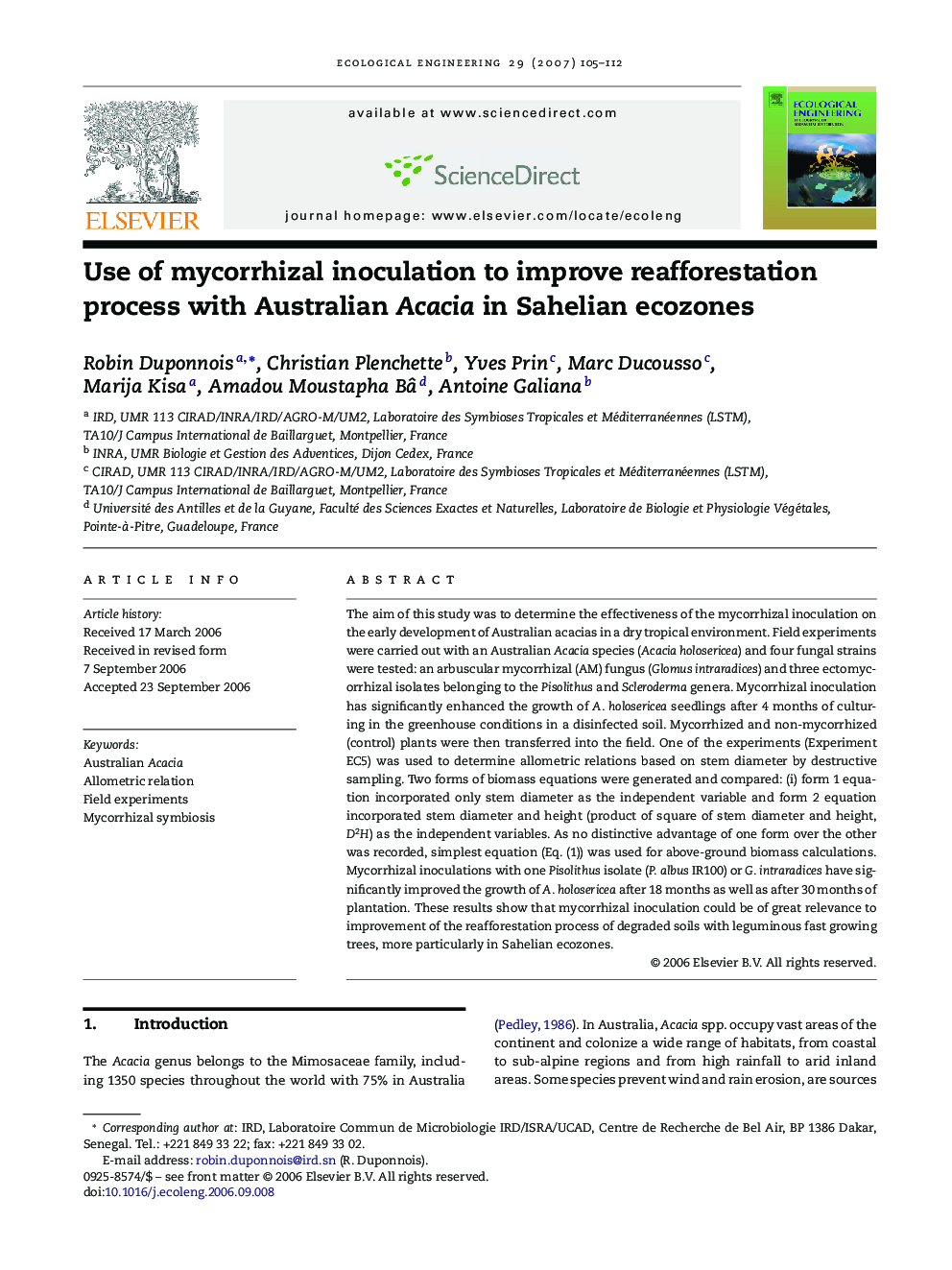| Article ID | Journal | Published Year | Pages | File Type |
|---|---|---|---|---|
| 4391195 | Ecological Engineering | 2007 | 8 Pages |
The aim of this study was to determine the effectiveness of the mycorrhizal inoculation on the early development of Australian acacias in a dry tropical environment. Field experiments were carried out with an Australian Acacia species (Acacia holosericea) and four fungal strains were tested: an arbuscular mycorrhizal (AM) fungus (Glomus intraradices) and three ectomycorrhizal isolates belonging to the Pisolithus and Scleroderma genera. Mycorrhizal inoculation has significantly enhanced the growth of A. holosericea seedlings after 4 months of culturing in the greenhouse conditions in a disinfected soil. Mycorrhized and non-mycorrhized (control) plants were then transferred into the field. One of the experiments (Experiment EC5) was used to determine allometric relations based on stem diameter by destructive sampling. Two forms of biomass equations were generated and compared: (i) form 1 equation incorporated only stem diameter as the independent variable and form 2 equation incorporated stem diameter and height (product of square of stem diameter and height, D2H) as the independent variables. As no distinctive advantage of one form over the other was recorded, simplest equation (Eq. (1)) was used for above-ground biomass calculations. Mycorrhizal inoculations with one Pisolithus isolate (P. albus IR100) or G. intraradices have significantly improved the growth of A. holosericea after 18 months as well as after 30 months of plantation. These results show that mycorrhizal inoculation could be of great relevance to improvement of the reafforestation process of degraded soils with leguminous fast growing trees, more particularly in Sahelian ecozones.
